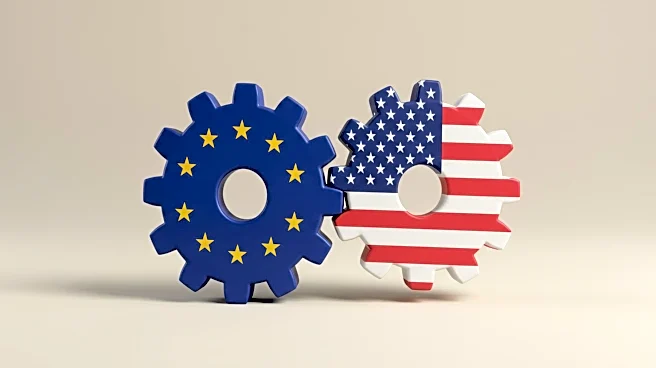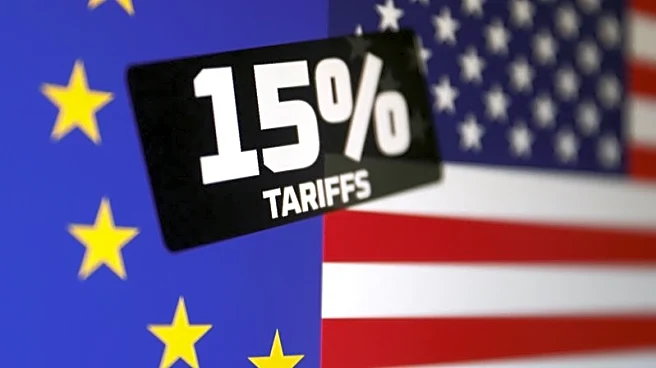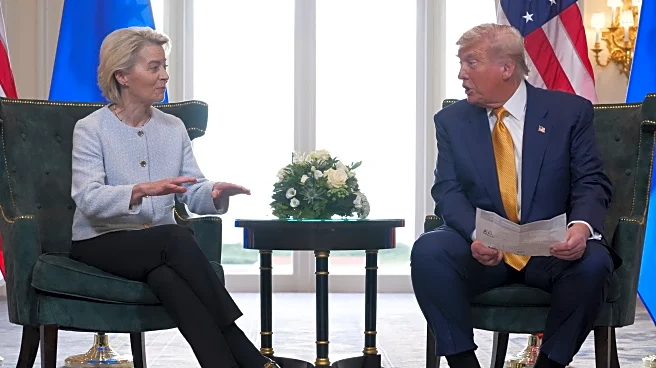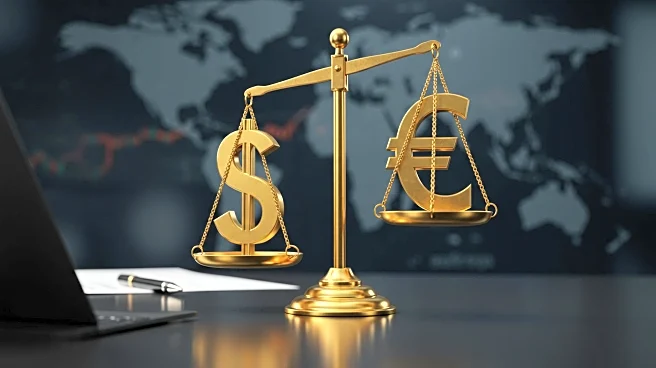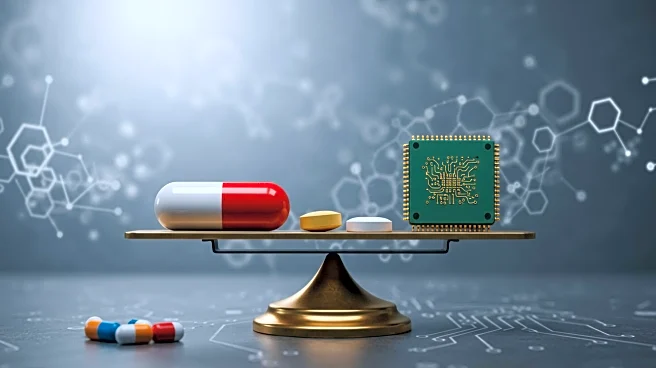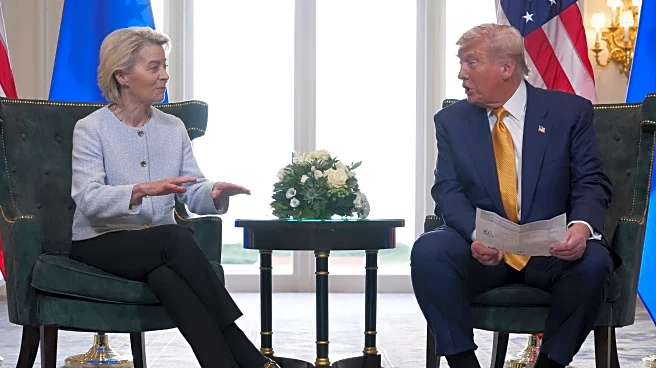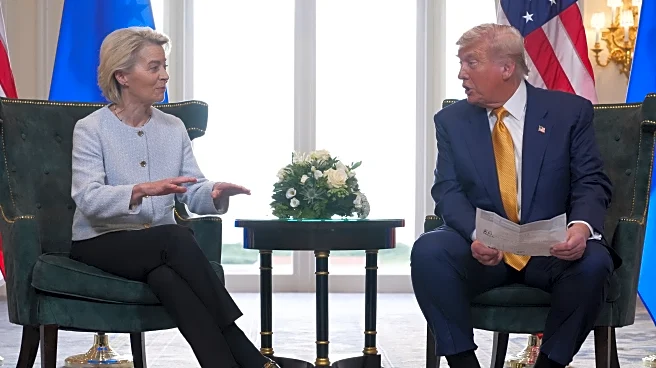What is the story about?
What's Happening?
The United States and the European Union have reached a trade agreement that includes a 15% tariff on pharmaceuticals imported from the EU into the US. This agreement, announced by European Commission President Ursula von der Leyen and President Trump, alleviates concerns of a potential 250% tariff on pharmaceuticals. The tariffs, effective from September 1, also cover other goods such as aircraft parts and natural materials like cork. The deal aims to establish a balanced transatlantic trade framework. The US will provide special treatment for EU generic medicines, subjecting them to 'most favoured nation' tariffs, which are nearly zero. In return, the EU will eliminate tariffs on all US industrial goods and improve market access for certain food products.
Why It's Important?
This trade agreement is significant as it reduces the risk of high tariffs that could disrupt pharmaceutical supply chains and impact research and development investments. The pharmaceutical industry, a major economic sector in both regions, stands to benefit from reduced trade barriers, ensuring better access to medicines. The agreement also reflects a strategic move to strengthen transatlantic trade relations, potentially leading to further tariff reductions and cooperation in other sectors. The deal is seen as a win for the US, given the EU's concessions on industrial goods and food products, which could boost US exports.
What's Next?
The agreement is described as a first step, with both parties expressing intentions to expand the deal to cover more areas and improve market access. Ongoing negotiations may lead to further tariff reductions and increased economic cooperation. Stakeholders in the pharmaceutical industry will likely monitor the implementation of the tariffs and any subsequent trade discussions closely.
AI Generated Content
Do you find this article useful?
